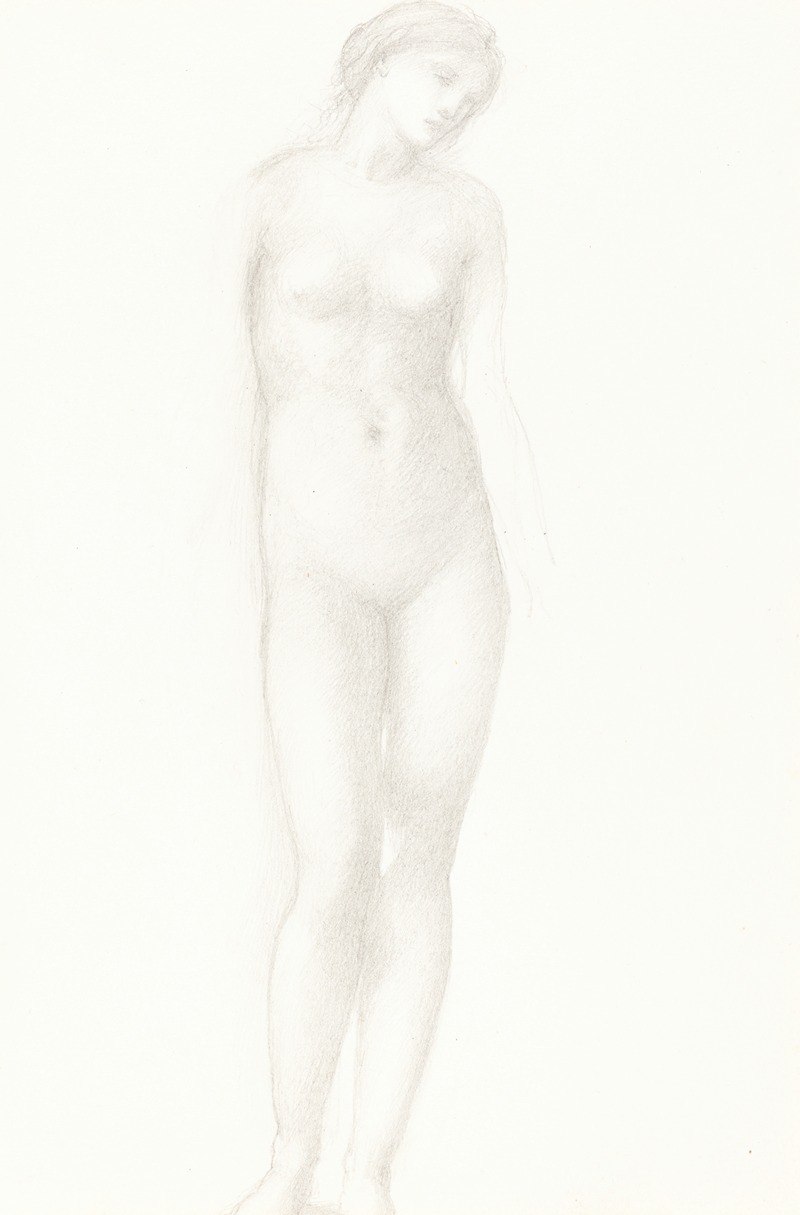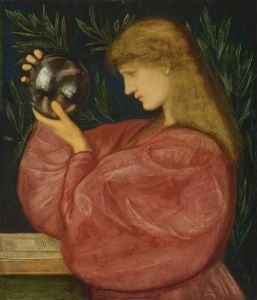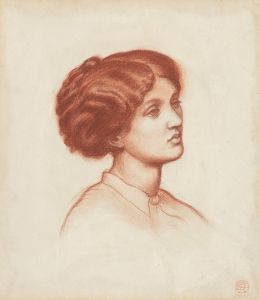
Venus
A hand-painted replica of Sir Edward Coley Burne-Jones’s masterpiece Venus, meticulously crafted by professional artists to capture the true essence of the original. Each piece is created with museum-quality canvas and rare mineral pigments, carefully painted by experienced artists with delicate brushstrokes and rich, layered colors to perfectly recreate the texture of the original artwork. Unlike machine-printed reproductions, this hand-painted version brings the painting to life, infused with the artist’s emotions and skill in every stroke. Whether for personal collection or home decoration, it instantly elevates the artistic atmosphere of any space.
Sir Edward Coley Burne-Jones was a prominent British artist and designer closely associated with the later phase of the Pre-Raphaelite movement. One of his notable works is "Venus," which exemplifies his fascination with mythological and classical themes.
"Venus" by Sir Edward Coley Burne-Jones is a painting that depicts the Roman goddess of love and beauty. Burne-Jones, known for his intricate and highly detailed style, often drew inspiration from classical mythology, medieval romance, and literature, which is evident in this work. The painting showcases his characteristic use of elongated figures and a dreamlike, ethereal quality.
The exact date of the painting "Venus" is not definitively recorded, but it is believed to have been created during the latter part of Burne-Jones's career, which spanned the mid to late 19th century. This period was marked by his mature style, where he focused on creating works that conveyed a sense of otherworldly beauty and melancholy.
In "Venus," Burne-Jones portrays the goddess in a serene and contemplative pose, often surrounded by symbolic elements that enhance the mythological narrative. The use of rich, muted colors and intricate patterns is typical of Burne-Jones's work, reflecting his background in decorative arts and his collaboration with the designer William Morris. The painting's composition and the delicate rendering of Venus's features highlight Burne-Jones's skill in creating a sense of timeless beauty and grace.
Burne-Jones's work, including "Venus," was part of a broader movement that sought to revive the artistic principles of the early Renaissance, emphasizing craftsmanship, attention to detail, and the use of historical and literary themes. His paintings often evoke a sense of nostalgia and longing, capturing the viewer's imagination and transporting them to a world of myth and legend.
"Venus" is a testament to Burne-Jones's ability to blend classical themes with his unique artistic vision. The painting reflects his deep appreciation for beauty and his commitment to creating art that transcends the ordinary. Burne-Jones's influence extended beyond painting; he was also involved in designing stained glass, tapestries, and other decorative arts, contributing to the broader Arts and Crafts Movement.
Today, Burne-Jones's works, including "Venus," are celebrated for their contribution to the Pre-Raphaelite movement and their enduring appeal. His paintings can be found in major art galleries and museums, where they continue to captivate audiences with their intricate beauty and evocative storytelling.
In summary, "Venus" by Sir Edward Coley Burne-Jones is a significant work that exemplifies the artist's mastery of mythological themes and his distinctive style. Through his use of detailed composition, rich colors, and symbolic elements, Burne-Jones created a painting that remains a timeless representation of the goddess of love and beauty.


















